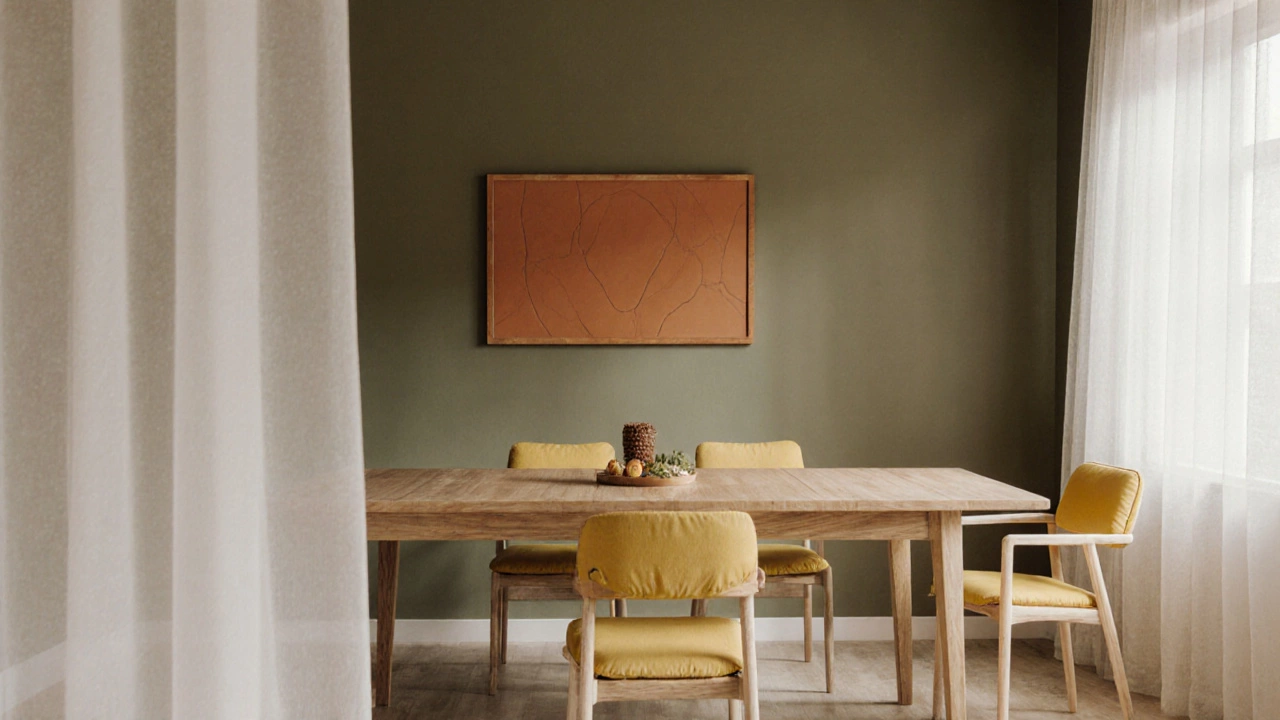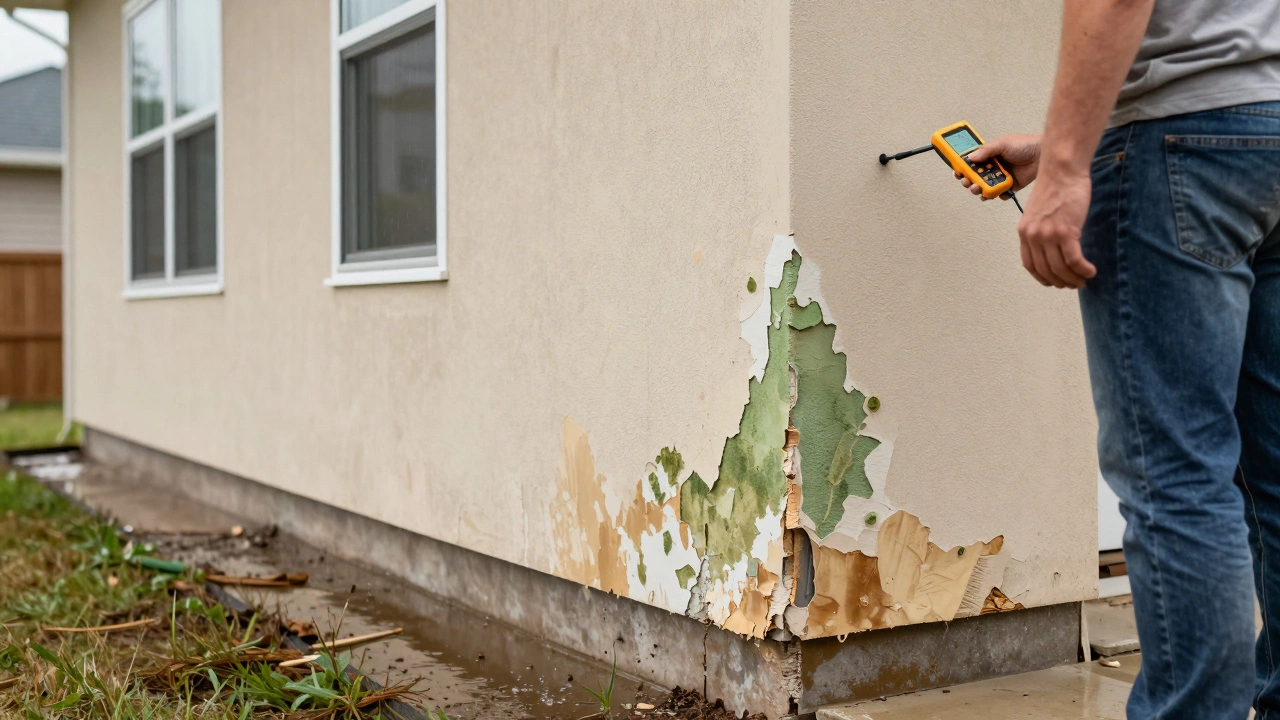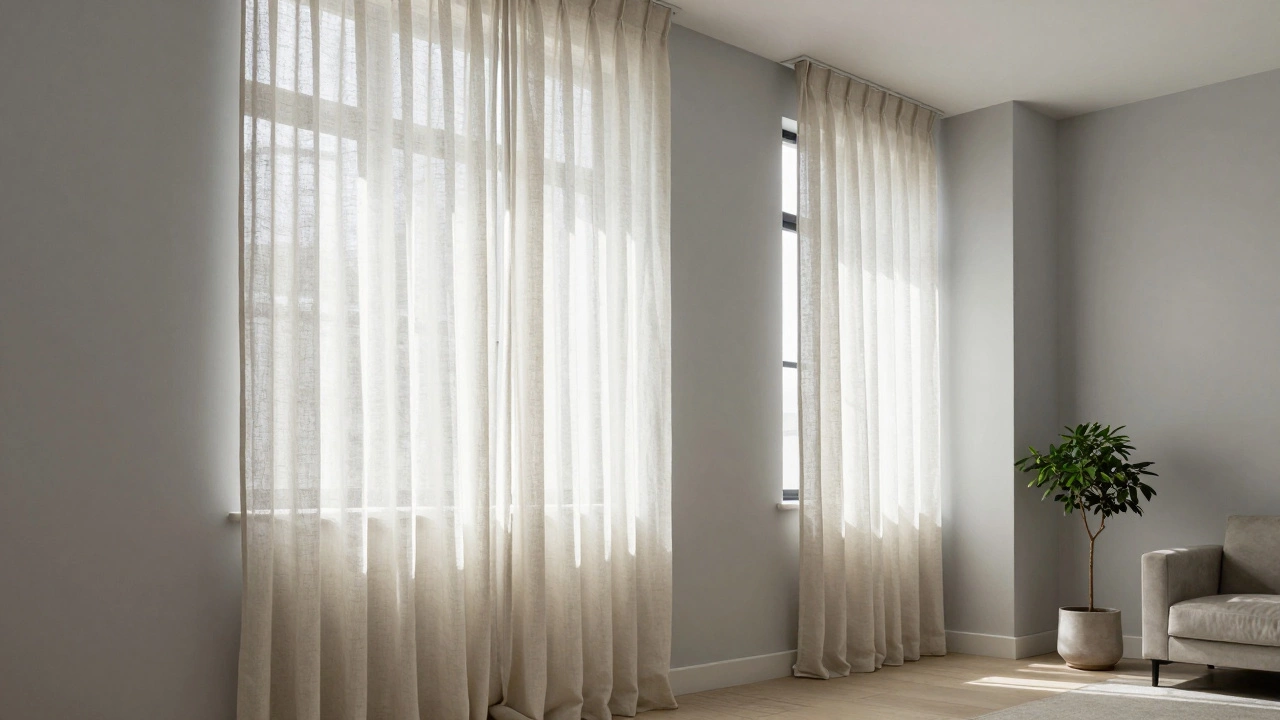If your family is anything like mine, the so-called 'dining table' rarely sees a formal dinner. Most weekday meals? They happen at the kitchen island, the coffee table, or standing right in the kitchen. The classic idea of everyone sitting down at a big wooden table just doesn’t match everyone’s life anymore, especially if you live in a small apartment or barely have room to stretch.
Lots of people feel awkward about not having a dining table—like it’s some major grown-up milestone. Truth is, it isn’t. These days, space is precious and so is your sanity. For some, a dining table takes up way too much real estate, collects laundry, or just gathers dust.
- Why Are Dining Tables a Thing Anyway?
- Living Without One: What Changes?
- Alternative Eating Setups That Actually Work
- How It Affects Family Time and Socializing
- Deciding What’s Right for You
Why Are Dining Tables a Thing Anyway?
Most of us probably grew up with a dining table at home. It’s always front and center in movies and ads when people picture 'family life.' But how did this piece of furniture get so much hype?
Back in the day—like way back to Medieval Europe—big tables weren’t in every home. Only rich folks or castles had big feasts at long tables. It wasn’t until the 18th and 19th centuries that everyday families started using dining rooms for regular meals, and tables became a must-have in the house. This was around the same time eating together started to mean 'family bonding' instead of just not starving.
Fast-forward to today, and you’ll notice that the way we use tables has changed a lot. In a 2023 survey by Furniture Today, only 52% of U.S. households said they used a traditional dining table for most meals. The rest? They ate at kitchen counters, coffee tables, or just in front of the TV.
| Where Americans Eat Most Often (2023) | Percentage |
|---|---|
| Dining Table | 52% |
| Kitchen Island/Counter | 23% |
| Living Room/Coffee Table | 17% |
| Bedroom/Elsewhere | 8% |
The main reason dining tables stuck around for so long is because they seemed like the heart of the home—the place for holidays, birthdays, or hearing about that gross science project your kid made at school. But these days, life moves differently. Work schedules, tiny apartments, and even how we socialize have shaken up the old ways. The so-called 'formal' meal just isn’t the rule anymore.
Another thing: for a long time, people believed having a proper dining table showed status. It meant you’d 'made it' and could afford space to gather everyone at once. But now, with open plans and multi-use rooms, that mindset is slipping.
Living Without One: What Changes?
Life without a dining table actually shifts your routines more than you’d think. For starters, you’ll probably eat in different places—the couch, the kitchen counter, or maybe even on your bed when you’re exhausted. That flexibility can be freeing, but it’s also easy to slip into habits like eating in front of screens or skipping real meal times altogether.
If you have kids, this really stands out. My kids, Finn and Hazel, will pretty much plop down wherever to eat, which works fine for pizza night but gets chaotic when spaghetti is in the mix. Plus, cleaning up crumbs on the couch? Never fun. Families often mention that without a set table, meals can feel less structured and messier. A recent survey from Apartment Therapy found that 42% of city dwellers use anywhere-but-the-table for meals, usually citing lack of space or not needing "formal" dinners anymore.
On the bright side, not having a dining table opens up a lot of room—sometimes literally. People living in tiny apartments, studios, or cramped homes often ditch the table to save square footage. That space can easily become a home office corner, a play area, or even just empty so it doesn’t feel cramped.
But there are trade-offs, and it’s good to know what you’re stepping into. Here’s a quick overview of what folks often notice when they skip the classic setup:
- Meals become less “formal” and more grab-and-go.
- It’s trickier to serve bigger family meals or host friends for dinner.
- Cleanup can be harder since you might eat in different rooms.
- More space for other stuff—storage, seating, or room to move.
Check out this quick comparison of meal-time habits with and without a dining table:
| With Dining Table | Without Dining Table |
|---|---|
| 70% eat together at scheduled times | 40% eat together, often at random times |
| Meals last 20-40 minutes on average | Meals average 12-20 minutes |
| Cleaning is centralized (one main area) | Cleanup spreads across multiple rooms or surfaces |
People find new routines, and some never miss the table at all. For others, it takes a bit of trial and error to land on something comfortable. Either way, it’s all about what fits your life—not what some magazine photos say you “should” do.

Alternative Eating Setups That Actually Work
You don’t need a traditional dining table to have real meals, even with kids running around or roommates eating at weird hours. Plenty of folks make smart use of whatever space they’ve got. Here’s what’s actually working in places where a dining room table just isn’t an option.
- Breakfast Bars and Kitchen Islands: These double as prep space and eating spots. A 2024 study by Apartment Therapy found nearly 48% of small-apartment dwellers use a kitchen island or bar for most meals. Toss a couple stools under there and you’ve got an instant dining spot.
- Coffee Tables: Honestly, families (mine included) end up eating plenty of meals sitting cross-legged in the living room. Coffee tables work great for casual dining—just keep some easy-to-clean placemats handy if you’ve got little ones.
- Wall-Mounted Drop-Leaf Tables: IKEA practically made these famous. You can fold them out when it’s time to eat and tuck them away when you need floor space. Super popular in apartments under 700 sq ft.
- Fold-Out or Expandable Tables: These hide away or shrink down when you’re not eating. Perfect if you want something for holidays or group hangs but don’t want a giant table all year.
- Outdoor Spaces: Patios, balconies, or even a tiny backyard with a couple of cheap chairs can do the trick in good weather. Sometimes, the picnic vibe just makes meals a little more fun, too.
If you want to see how common these setups really are, check out this quick breakdown:
| Setup Type | % of Urban Dwellers Using It (2024) |
|---|---|
| Kitchen Island/Bar | 48% |
| Coffee Table | 35% |
| Drop-Leaf/Fold-Out Table | 22% |
| Outdoor/Balcony Table | 16% |
| No Table at All | 9% |
The best setup depends on your habits. If you’re mostly grabbing quick bites, something casual like a coffee table works. If you do meal prep with your kids or like to host, a kitchen island or fold-out table offers more real estate without eating up your square footage. And hey, don’t be afraid to mix it up—lots of people use whatever works on any given day. No rules here, just eat where you feel comfortable.
How It Affects Family Time and Socializing
No dining table? That does shake up family meals and how you host friends. You won’t get those classic sit-down dinners, but it doesn’t mean your family connections go out the window. Studies (like that 2022 survey from IKEA on home eating habits) show only about one third of families use the dining table daily. Turns out, where you eat matters less than whether you actually make time for each other.
When my kids—Finn and Hazel—are around, dinner is sometimes a picnic on the living room floor or a scramble on stools at the kitchen counter. And that’s still family time. You can get creative and make shared meals anywhere. The real factor is putting down devices, facing each other, and chatting, even if it’s over takeout on the couch.
Socializing gets interesting too without a "proper" table. If you like hosting, finger foods and laid-back buffet setups beat a cramped, formal dinner any day in a small space. Think board games on the coffee table, or movie nights with snacks. Nobody needs a dining table to have a good time together—it’s more about the vibe you set.
- Stick to a no-phones rule to keep everyone focused, whether you’re at a table or not.
- Try setting a regular meal ritual, like Taco Tuesdays in the living room.
- Pull up extra seating for friends using poufs, floor pillows, or even upside-down laundry baskets with cushions. Nobody will remember the furniture; they’ll remember the fun.

Deciding What’s Right for You
The big question: Do you and your family really need a dining table, or can you skip it? There’s no "one size fits all" here. Think about your space first. If you live in a small apartment, a big table can feel like a waste, especially if you eat most meals at the counter or couch. According to a 2023 Apartment Therapy survey, more than 30% of young adults in cities said they don’t even own a full-size dining table.
If you have kids who like to spread out homework or art projects, a table—even if it’s a drop-leaf or foldable one—might pull double duty. On the flip side, if you've found that every meal ends up on the coffee table or the balcony, forcing a "formal" setup could be more hassle than it’s worth.
- Walk through your daily routine—where do you naturally eat?
- Check if your guests even care. These days, most people are fine gathering around a kitchen island or snacking in the living room.
- Figure out what matters most to your family: organized meals or more open space for other things?
If you’re weighing alternatives, consider foldable tables, extendable drop-leaf options, or wall-mounted trays. These are perfect for tight spaces and can still give you that "dining feel" when you want it.
The only real "rule" is what works for you. Don’t let trends or social media convince you a dining table is a must-have if it just isn’t practical. At the end of the day, your home should fit your life—not the other way around.






